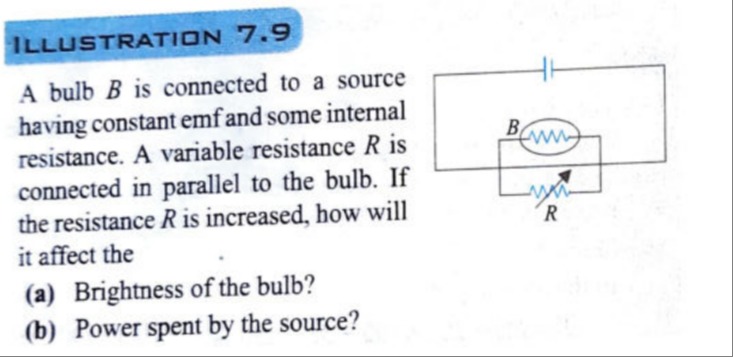Question
Question: A bulb $B$ is connected to a source having constant emf and some internal resistance. A variable res...
A bulb B is connected to a source having constant emf and some internal resistance. A variable resistance R is connected in parallel to the bulb. If the resistance R is increased, how will it affect the
(a) Brightness of the bulb? (b) Power spent by the source?

A
(a) Brightness of the bulb: Increases, (b) Power spent by the source: Decreases
B
(a) Brightness of the bulb: Decreases, (b) Power spent by the source: Increases
C
(a) Brightness of the bulb: Increases, (b) Power spent by the source: Increases
D
(a) Brightness of the bulb: Decreases, (b) Power spent by the source: Decreases
Answer
(a) Brightness of the bulb: Increases, (b) Power spent by the source: Decreases
Explanation
Solution
(a) Brightness of the bulb:
- The equivalent resistance of the parallel combination of the bulb (RB) and the variable resistor (R) is Rparallel=RB+RRBR. As R increases, Rparallel increases.
- The voltage across the parallel combination (and hence across the bulb) is Vparallel=Er+RparallelRparallel, where E is the constant EMF and r is the internal resistance. As Rparallel increases, Vparallel increases.
- The power dissipated by the bulb, which determines its brightness, is PB=RBVparallel2. Since Vparallel increases and RB is constant, PB increases. Thus, the brightness of the bulb increases.
(b) Power spent by the source:
- The total current drawn from the source is I=r+RparallelE. As Rparallel increases, the denominator (r+Rparallel) increases, causing the total current I to decrease.
- The power spent by the source is Psource=E×I. Since E is constant and I decreases, the power spent by the source decreases.
